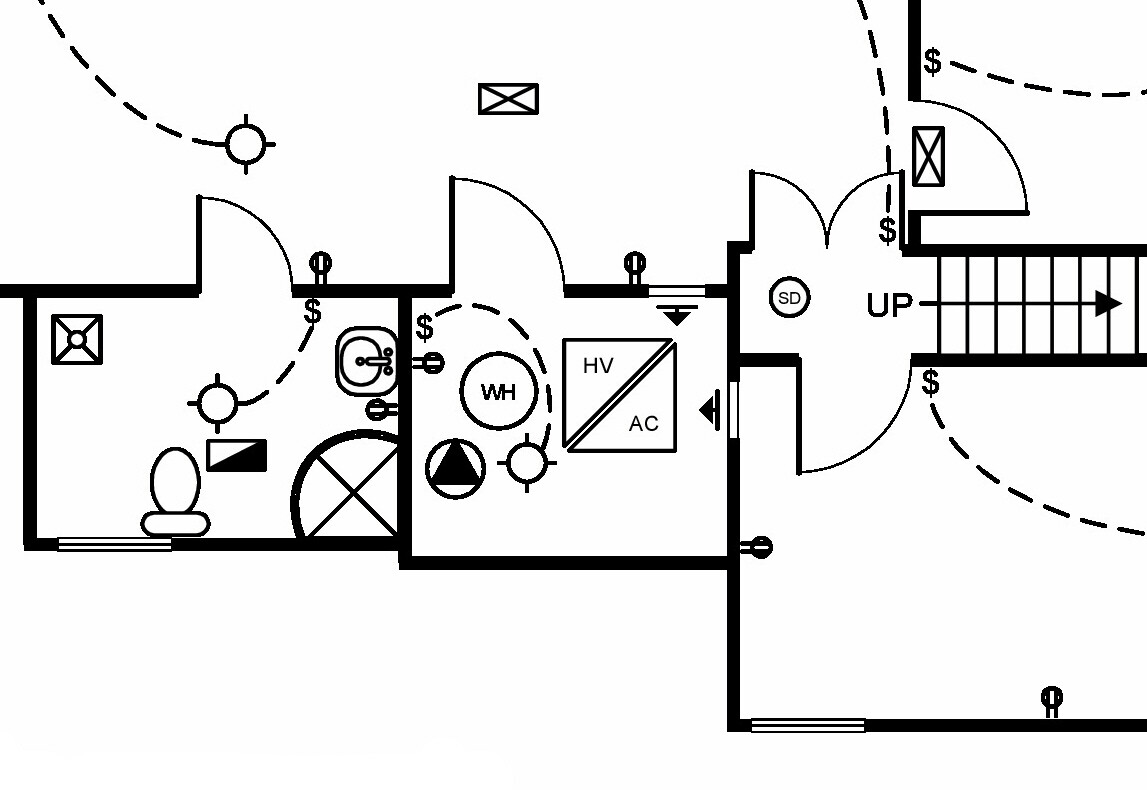Ever see a six-pack house? I have. As a real estate agent I’ve had the pleasure of visiting and showing hundreds of homes, and one in particular made my day, although not necessarily in a good way.
“I see a red door and I want to paint it white”
The owners had put the house on the market and decided that a fresh coat of paint would help attract a buyer. When I opened the front door to show the home, I was greeted with—white. White walls. White ceilings. White doors. White trim. Flat white. Run-your-fingernails-across-the-walls-and-you’ll-scream white.
The flat white paint wasn’t limited to the aforementioned surfaces, either. The chalky stuff covered light switchplates, electrical outlet covers, air vents, everything. It was as if the owners had placed an ad on Craigslist for a bunch of frat boys, gave them each a six-pack of beer, a paintbrush and copious amounts of white paint and told them to go to town. Obviously the beer had run out long before the paint did. I named it the six-pack house for obvious reasons.
At some point you will be faced with painting your home, either to sell it or to make it more pretty to look at as you wander from room to room. You can do a half-assed job (see above), or you can follow some easy tips and have a home to be proud of. Here’s a short and simple list that will make all the difference in the world.
Adjust the contrast
 Whatever shade or shades of paint you pick for your walls, paint the doors and trim a shade of white. By trim I mean door frames, window frames and sashes, baseboards, crown molding, chair rails and whatever raised millwork you may have on the walls.
Whatever shade or shades of paint you pick for your walls, paint the doors and trim a shade of white. By trim I mean door frames, window frames and sashes, baseboards, crown molding, chair rails and whatever raised millwork you may have on the walls.
If the muses strike you and you want to use a color other than white for the trim, be my guest. But the contrast between the trim and walls will give the entire home an immediate “pop” that will make a huge impact.
Don’t gloss over this
Ever notice the array of available finishes for paint? There’s flat, eggshell, semi-gloss, gloss and a dozen other terms that essentially mean the same things. Each finish has a purpose and a place in your home.
Flat paint hides surface irregularities best in bright light, while glossy paint exposes every spackle patch, scuff mark and imperfection in the sheetrock. On the flip side, glossy paint holds up best to cleaning, while flat paint never fully recovers from being rubbed.
For these reasons, pick an eggshell or semi-gloss finish for walls, something that will mask imperfections yet can be lightly cleaned. Doors and trim take a heap of abuse, so use a more glossy finish. The wood texture will not reveal any irregularities in light anyway.
Flat as a ceiling
Pick up a can of paint made especially for ceilings and read the label. It will probably state “ceiling white” and “flat.” The operative word here is FLAT. If you want to channel your inner Martha Stewart and paint your ceilings a nice hue of seafoam, go for it.
But for the love of Home Depot, please do not ever use a glossy paint. Never ever, as Taylor Swift would say. A glossy ceiling reflects every flicker of light in the universe and screams a fact known to every builder on earth: no ceiling is perfectly even. So unless you are aiming for that bordello look with a reflective ceiling, stick with flat paint.
Think like a fly
You have your tools ready and you’re stoked to start painting a room. Where do you begin? Simple. Start with the ceiling. There is a very good reason for this, too.
No one has a hand steady enough not to smear even a smidgen of paint that belongs on a ceiling onto a wall or vice versa. If you start with the walls and paint the ceiling last, you will see the little white imperfections as you stand in the middle of the room and gaze along the corners between the walls and ceiling. But if you paint the walls last, the only way you’ll see those imperfections is if you’re belly-up against a wall staring straight up.
That may still happen, of course. If you’re a fly. Or drunk.
Throw off the covers
Before you start painting, think about what you want to paint: the walls; the ceiling; the trim. Everything that does not fall into one of these categories is not to be painted. This list includes light switchplates, electrical outlet covers, air vent louvers, trim rings for recessed lights, pets, small children and anything else not called a Wall or Ceiling.
Don’t be lazy. Break out the screwdriver and take all those items off before you paint. Go one step further and remove the doorknobs as well. The result will be a more professional and pleasing look.
While we’re at it, even with the electrical outlet covers off, be careful not to paint the outlets themselves with your roller. A. It’s unsightly, and 2. Some home inspector having a bad day may actually fail you for painting over an electrical component.
Are you taping this?
Home improvement stores sell a wonderful blue tape made specifically for painting. It’s not worth a snot as tape for sealing, since the adhesive is not strong enough to hold so much as a paper clip. But stick it along molding, in corners, on windows and anywhere else you want a perfectly straight painted line and it works wonders.
Here’s a tip, though: Don’t wait until the paint is dry before peeling off the tape, as it may peel some of the paint off with it and leave a jagged line. Carefully pull the tape shortly after painting, and you will be left with a razor-sharp edge you will be proud of.
Cut it out
Everyone born after 1940 knows that paint rollers are used on flat surfaces such as walls and ceilings. But they are round, and corners are angled. So you have to “cut in” corners with a paintbrush before breaking out the roller.
Take your time with the brush, and paint about three inches in from the corners to allow using a roller safely later. The big hint here is that brushes do not lay on as much paint as rollers, so put two or three coats of paint in corners to cut in. If you don’t, you’ll be left with a distinct strip of lighter or darker paint along the entire edge.
Painting isn’t difficult. We all learned it back in pre-school along with counting our toes and tying our shoelaces. Follow the tips above, use some common sense and add a good dose of creativity, and you’ll do a commendable job indeed.
Oh, one last tip: it’s probably best to leave the six-pack for celebrating after the mission’s accomplished.



